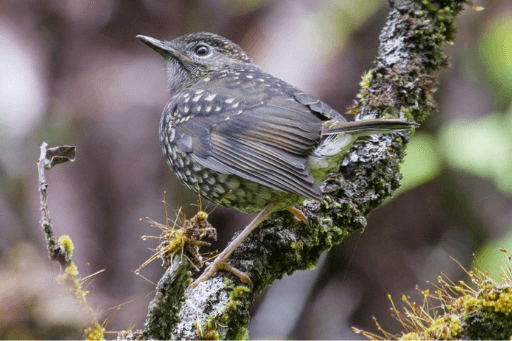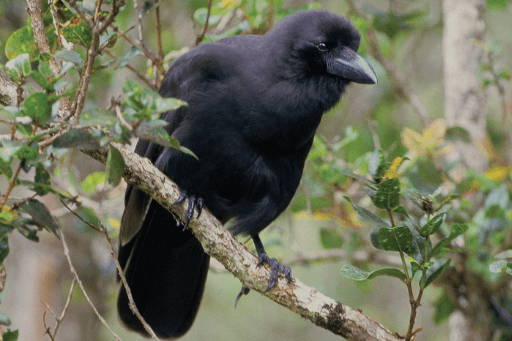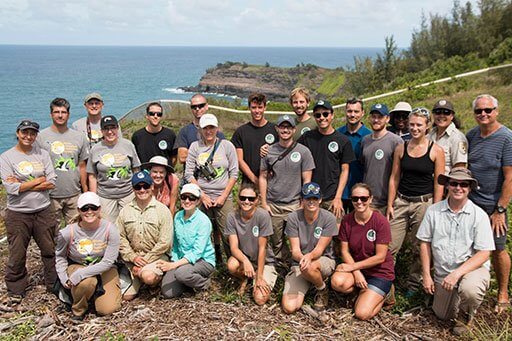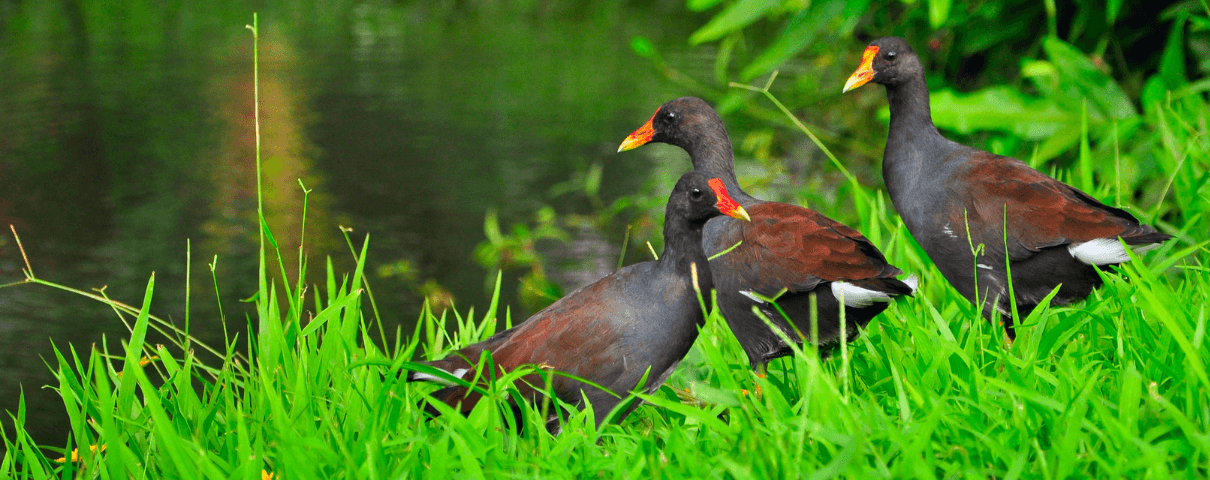The Five Rarest Hawaiian Birds: Native Species on the Edge of Extinction
Two-thirds of Hawaiian native avian diversity — 95 species — has disappeared since human settlement of the islands 1,600 or more years ago, earning the state its grim label as “the bird extinction capital of the world.”
The danger to Hawaiian birds, however, is not a thing of the past: Twenty-six of the islands' surviving 38 native birds are listed under the Endangered Species Act, and three of these have not been seen for decades and are likely extinct.

Despite challenges, conservationists remain committed to endangered Hawaiian birds, and have played a key role in the survival of many of the islands' imperiled species, which requires combatting a complicated assortment of threats.
Among the greatest of these dangers are introduced species. Non-native mammalian predators, such as cats and mongooses, prey upon Hawaiian birds; invasive plants replace native flora that birds rely on for food, nesting, and shelter; and, perhaps worst of all, introduced and deadly diseases like avian malaria and pox are spread by non-native mosquitoes.
In addition, habitat loss has reduced all native vegetative types to a fraction of their original size, while warming temperatures and sea-level rise reduce the viability of important low-elevation forests and wetland habitats, as well as some important seabird nesting sites.
While these impacts have devastated many rare Hawaiian birds, not all species have been impacted equally. We've focused below on the five rarest birds, ordered from largest to smallest population size.
There is still hope for these species, so continue scrolling to learn how conservationists are working to protect these birds and how you can get involved, too.
A note on names: We used Hawaiian names for bird species, placing English versions, where different, in parentheses.
Five: Puaiohi (Small Kaua‘i Thrush)

The Puaiohi (Myadestes palmeri), which survives in the wet forests of Kaua‘i's Alakaʻi Plateau, is one of only two remaining endemic Hawaiian thrushes. Three other thrushes previously found across the islands, Kāma‘o, ‘Āmaui, and Oloma‘o, have already gone extinct.
Puaiohi subsist primarily on a diet of native fruits found in high-elevation ‘ōhi‘a forests on Kaua‘i. These small gray thrushes nest among dense ferns and mosses along the walls of steep, forested ravines. Their song, which is similar to that of the Townsend's Solitaire, is unique in Kaua‘i's forest.
Populations of Puaiohi have been decimated by non-native rats, which prey on the birds' eggs and nestlings in their cliff-side nests. Habitat degradation, driven by introduced pigs, goats, and plants, has also contributed to Puaiohi declines.
The Puaiohi was added to the U.S. endangered species list in 1967 and remains listed today. Scientists estimate that only 414 to 580 of these birds remain. The International Union for Conservation of Nature's, or IUCN's, Red List classifies this species as Critically Endangered.
Four: ‘Alae ‘Ula (Hawaiian Gallinule)

Once found widely on most of the main Hawaiian islands, the ‘Alae ‘Ula (Gallinula galeata sandvicensis) is now restricted to Kaua‘i and O‘ahu, where it inhabits freshwater low-elevation marshes, streams, drainage ditches, and loʻi (traditional, flooded- agriculture fields). Historically, these birds were so abundant that their calls were used as a defining characteristic of the areas they inhabit in mele (Hawaiian chants/songs).
The ‘Alae ‘Ula is a subspecies of the widely distributed Common Gallinule and is distinguished from other continental gallinules by the reddish coloration on its legs, as well as its more expansive facial shield.
A combination of threats has pushed the ‘Alae ‘Ula to the edge of extinction. Development projects and changes in dominant agriculture practices have destroyed its wetland habitat, and rising sea levels pose a growing threat to low-lying freshwater marshes. A host of introduced predators, including mongooses, turtles, bullfrogs, and cats, prey upon the ‘Alae ‘Ula, its eggs, and its nestlings.
Listed as Endangered under the U.S. Endangered Species Act, the ‘Alae ‘Ula population is trending upwards, but it still faces an uncertain future. Its current population is estimated to be 400 to 600 individuals.
Three: Kiwikiu (Maui Parrotbill)

Historically widespread on the islands of Moloka‘i and Maui, the Kiwikiu (Pseudonestor xanthophrys) has retreated from nearly all of its former range and is now only found within a small area of wet montane forest covering less than 11 square miles on the eastern slope of Maui's Haleakalā Volcano.
This secretive bird seems to have always been rare, and its Hawaiian name was lost in history. It was given a new Hawaiian name with a mele inoa during a 2010 ceremony in its wet ‘ōhi‘a forest home.
Like most other Hawaiian honeycreepers, the Kiwikiu lacks immunity to some mosquito-borne diseases, including avian malaria. This disease frequently proves fatal to honeycreepers, sometimes after a single bite by a malaria-infected mosquito.
Because of mosquitoes and mosquito-borne diseases, Kiwikiu have been limited to higher, cooler elevations where the mosquitoes and malaria cannot reproduce. However, due to climate change, these areas are becoming less safe, as warming temperatures allow mosquitoes to move farther upslope. In addition, Kiwikiu are threatened by habitat destruction and degradation from non-native pigs, as well as predation by introduced cats and mongooses.
Kiwikiu are listed as Endangered by the U.S. Fish and Wildlife Service and as Critically Endangered by the IUCN. Population estimates place the total population between 109 and 202 individuals.
Two: ‘Alalā (Hawaiian Crow)

Historically, the ‘Alalā (Corvus hawaiiensis) was found within the forested slopes of the Hualālai and Mauna Loa Volcanoes on Hawai‘i Island. ‘Alalā declines began during the beginning of the 20th century, and accelerated in the 1930s and afterwards due to habitat destruction, human persecution, and non-native predators.
‘Alalā are also vulnerable to introduced diseases, including toxoplasmosis, a virus transmitted by feral cats that has killed some birds.
Combined, these threats have driven ‘Alalā to the edge of extinction, and these highly sociable birds are no longer found in the wild: Since 1996, they have survived in a captive breeding program. Attempts to reintroduce ‘Alalā into the wild in the 1990s and from 2016 to 2019 resulted in high mortality rates, and surviving birds were returned to captivity. Despite these setbacks, conservationists still hope to return ‘Alalā to their forest home. Approximately 120 ‘Alalā survive. IUCN's Red List lists this species as Extinct in the Wild.
One: ‘Akikiki (Kaua‘i Creeper)

While ‘Akikiki (Oreomystis bairdi) are currently confined to wet upland forests partially protected within Kokeʻe State Park and Alakaʻi Wilderness Preserve on Kaua‘i, fossil records indicate that they once inhabited lower elevations, down to sea level.
Like North American nuthatches, ‘Akikiki subsist on insects gleaned among the bark of snags and tree trunks. The few nests of ‘Akikiki found were high in the canopy of ‘ōhi‘a trees and, perhaps for this reason, ‘Akikiki enjoy greater nesting success than other Hawaiian forest birds.
However, these success rates are not enough to tip the scales against mosquito-borne diseases, such as avian malaria, which has decimated ‘Akikiki populations. Kaua‘i is a relatively low island, and mosquitoes are now present nearly year-round in the highest elevations, exposing all the native birds in these forests to mosquitoes and avian disease. Like other native birds, ‘Akikiki also suffer as introduced plants and animals, such as pigs, kahili ginger, and miconia, alter and degrade native habitat.
‘Akikiki are listed as a federally Endangered species, and as Critically Endangered on IUCN's Red List, but their population has continued to decline as non-native species invade their native forest refuge. The most recent population estimate is that only 28 to 76 birds survive.
Conservation of Rare Hawaiian Birds

American Bird Conservancy (ABC) and partners are racing to provide conservation solutions for endangered Hawaiian bird species before it's too late.
Along with partners, ABC has helped launch and guide the Birds, Not Mosquitoes initiative, which is working to save Hawaiian honeycreepers from mosquito-borne disease. Partners will use common, naturally occurring bacteria as "mosquito birth control" to suppress mosquito populations and reduce the spread of avian malaria and pox.
Working with the Mauna Kea Forest Restoration Project, ABC is restoring critical habitat for Palila and other native birds by planting thousands of native trees. Additionally, we are removing invasive predators and maintaining the fence that protects the remaining māmane–naio forest from browsing non-native sheep and goats. ABC is also supporting Palila population surveys to help inform and improve management decisions.
On Kaua‘i, ABC and the Kaua‘i Forest Bird Recovery Project are conducting non-native predator trapping on more than 370 acres of critical breeding habitat used by Kaua‘i's endemic forest birds, including the ‘Akikiki and Puaiohi. By reducing non-native predator numbers, we're helping to increase the odds that these species can successfully reproduce and, eventually, rebound. We are also conducting surveys at mosquito breeding sites and tracking the insects' movement patterns to inform our mosquito-suppression work.
Finally, to improve planning and management of remaining Kiwikiu populations, ABC and the Maui Forest Bird Recovery Project are conducting rapid-assessment surveys and scouting-and-capture trips that will provide an index of the bird's population in Maui's eastern forests. As on Kaua‘i, we are currently conducting mosquito surveys on Maui in preparation of future suppression efforts.

Help Protect Native Hawaiian Birds
Policies enacted by the U.S. Congress and federal agencies have a huge impact on Hawaiian birds. You can help shape these rules for the better by telling lawmakers to prioritize birds, bird habitat, and bird-friendly measures. To get started, visit ABC's Action Center.
Our Hawaiian partners frequently need help with habitat restoration and other projects benefiting birds. If you live on or will be visiting Hawai‘i and would like to volunteer, check the following Facebook accounts for opportunities: Kaua‘i Forest Bird Recovery Project, Maui Forest Bird Recovery Project, and Mauna Kea Forest Restoration Project.
Our conservation work on Hawai‘i is made possible in part by the generous support of concerned individuals. If you would like to help, please consider making a contribution today.
Population Numbers of Endangered Hawaiian Birds
Accurate population figures for Hawai‘i's endangered birds are difficult to obtain due to the demands involved in surveying tiny, mobile, remote populations. While acknowledging that population shifts may have occurred, we have used the most up-to-date data available. It's also worth noting that people living on or visiting Hawai‘i see many birds, but most of these are introduced species — not the ones mentioned on this list.
 | Joe Lowe is ABC's Director of Digital Communications. He holds has an MS in Journalism from Ohio University and Masters in Natural Resources from Ohio State University. |


















































